The Best Calligraphy Practice Paper
This week I’m sharing my favorite calligraphy papers for practice, from printer paper to specialty guideline pads. Whether it’s tracing or freehand practice you’re after, I hope my list will narrow down your search!
While we all know that pen, nib, and ink are crucial tools for calligraphy, the importance of good paper cannot be overstated. When it comes to learning calligraphy, good practice paper will make your life much easier, so you should consider it as important as your pen and ink. I like to compare it to playing an instrument. No matter how hard you practice and how well-honed your skill is, you cannot make the most beautiful music on a bad instrument. The same is true of calligraphy supplies, and paper is no exception.
What makes a good calligraphy practice paper?
There are five main factors you should consider when buying calligraphy practice paper:
Weight (i.e. how thick it is)
Texture (also known as “tooth”)
Finish (refers more to coating than inherent paper texture)
Size
Color
Weight is important because paper that is too thin means your ink can bleed through to the other side, and the ink’s moisture can cause the whole sheet to ripple and curl.
A poor texture in calligraphy paper will cause your ink to bleed by absorbing it into the surrounding fibers. It will also cause your pen to snag or skip along the fibers and ridges. Sometimes the paper fibers will even get caught in the nib’s fine tines, causing smears until you remove it.
If the finish of the paper is too glossy, it will cause ink to bead up, making puddles on the page. This means that most (but not all) photo paper, metallic paper, and plasticized paper are poor choices for calligraphy. Too uncoated, and the ink will bleed into oblivion. Examples of very uncoated and fibrous papers are handmade and kraft papers.
Size is a consideration if you plan to travel with your paper, or use it in a printer. I always recommend a large paper pad (at least US letter or A4 size) when you can manage it. This gives you room to move around the page, and you’re less likely to scrunch up or contort your arm and hand than if you were accommodating a smaller size. Small pads are, of course, great for calligraphy on the go, so I’m not ruling them out entirely!
And of course, color matters depending on your ink. For legibility, you will want a color that contrasts with your ink.
Best Paper for Printable Calligraphy Practice Sheets
“What printer-friendly paper pairs well with a calligraphy pen and ink?” I get asked that a lot. With the abundance of printable practice sheets out there (including my own free ones in Molly’s Lettering Toolkit), it’s important to print your practice exercises on calligraphy-worthy paper if you want to write directly on your practice sheets. (Yes, you can also trace them using translucent practice paper, but I’ll get to that later.)
Premium laserjet printer paper is my favorite paper for printing calligraphy practice sheets
My Free Lettering Toolkit has tons of free printable calligraphy practice sheets
This is a trickier question than it may sound. Not all printer papers are created equal for ink absorption. Some will cause the ink to bleed terribly. Others, when even slightly damp with ink, will ripple and contort, making it impossible to keep the surface flat. And still others have a coating that makes the ink bead up, almost as if it’s waterproof. You can see that it’s hard to find a happy medium between a paper that works well both with your home printer and your calligraphy ink!
So when it comes to printable calligraphy practice sheets, I recommend stocking your studio with a ream of high-quality laserjet paper. My personal favorite is the HP Premium 32-lb Printer Paper. One 500-sheet ream of this is the price of a single notepad, so it’s also a great bargain.
(You can’t go wrong if you combine this printer paper with a classic black calligraphy ink, such as my favorite Sumi ink!)
Best Calligraphy Papers for Freehand Practice
There are lots of great paper options for practicing pointed pen calligraphy. You have the option of paper pads or loose paper, blank or lined, translucent or opaque. Here are some of my all-time favorites, all of which I recommend for calligraphers at any stage in their practice.
John Neal Books sells wonderful, blank calligraphy practice paper
Rhodia Dot Grid pads take calligraphy ink wonderfully, and lie flat when open
Loose sheets
If it’s loose paper you’re after, and a lot of it, get a ream of John Neal’s Practice Paper. This box of 500 high-quality sheets is a bargain. It’s unlined, slightly translucent, and has just the right amount of “tooth” (i.e. texture) to be perfect for pointed calligraphy pen nibs. I like to use these papers with a nice clipboard, which makes it easy both to move it around on my desk and to clip a guideline sheet securely behind it. Incidentally, it can also go through your home printer! John Neal’s site says they have tested this paper with a wide range of popular lettering inks and can attest that it works perfectly: Higgins Eternal, Noodler’s, McCaffery’s, and Pilot Parallel Pen ink cartridges. I’ve used this paper with all my favorite calligraphy inks and agree that it’s a dream!
Paper pad
In most of my modern calligraphy practice, I usually just want a hint of a baseline – and even then I only adhere to it if I feel like it! I personally don’t use complex calligraphy grids unless the calligraphy style I’m doing calls for it. That makes the Rhodia Dot Grid Pad perfect for me. As the name suggests, it has only a grid of dots printed on the paper, which you can use more as cues for your baselines rather than hard-and-fast guidelines. The dots are quite faint, so they don’t distract. Rhodia makes blank and lined pads, too, and all of them are great quality for calligraphy. They don’t ripple, bleed, or tear. As an added bonus, Rhodia pads have the perfect lay-flat binding, so you can flip the sturdy cover under the pad without sacrificing a stable surface.
Best Tracing Papers for Calligraphy Practice
Tracing paper is useful in calligraphy practice in a number of ways. First and foremost, it can be put over guide sheets so that you can write calligraphy using guidelines, yet not have the guides printed right on your artwork – the best of both worlds! This also means that it’s easy to swap out one guide sheet for another, testing out a number of them on a single practice sheet. (To get you started in the world of calligraphy guides, I have a set of 12 printable lettering guide sheets as part of my free Lettering Toolkit!)
Second, you can use tracing paper to practice letterforms, by overlaying it on calligraphy exemplars, whether those are printed sheets or a book. Tracing lettering builds important muscle memory in your hand and arm, keeps you nimble, and reinforces the small movements required to make letterforms.
And finally, tracing paper can be used for refining your work. After drafting, say, a calligraphy layout design, you can use tracing paper to redraw it, polishing the letters and layout as you go.
Borden & Riley Layout Bond is hands-down my favorite translucent writing pad
Canson Translucent Vellum is smooth and translucent, making it great for tracing
Free downloadable guide sheets are available in Molly’s Lettering Toolkit!
My favorite calligraphy practice papers for tracing don’t actually bear the word “tracing” in the title. Generally, paper with that label is too thin for calligraphy – the ink will bleed through the paper and cause it to ripple. Instead, I like thicker, translucent papers that will hold ink and not ripple.
Borden & Riley Layout Bond is my absolute favorite for calligraphy tracing and guide sheet overlaying. In my opinion, it’s the best of all the layout bond papers. (Many companies make layout bond, and Strathmore comes in a close second.) It has a slight amount of texture, which grips the pen nicely, and magically, it doesn’t ripple even though it feels quite delicate! I’ve often provide these pads to students in my workshops, along with my guide sheets.
If it’s smoother paper you’re after, try Canson Vellum Translucent Paper. Vellum papers have a unique texture. Just be sure to purchase a pad that explicitly says “translucent,” because many fine papers use the term “vellum” to describe the finish, not the translucency. Vellum paper should not be confused with, say, Bristol Vellum, which is a thick, opaque paper!
Best Calligraphy Papers with Printed Guidelines
Even though I said that I prefer few or no guidelines in my modern calligraphy practice, I do like using printed guide paper when learning traditional pointed pen calligraphy exemplars. Whether it’s Spencerian, Copperplate, or vintage business script, these can be an easy way to learn italic slant and letter proportion, without dealing with layered guides and tracing paper.
Paper & Ink Arts makes this lovely Spencerian Practice Pad. I love the blue lines, which don’t distract.
Studio Series Calligraphy Paper is lightly ruled with a basic slant grid that’s great for both modern and traditional calligraphy practice
Calligraphy studio Antiquaria released this exceptional Calligraphy Practice Pad, which is pretty enough for letter-writing
For fancy script practice, I recommend Paper & Ink Arts’ own Spencerian Practice Pad, which is lined with traditional Spencerian horizontal and slant lines, guiding you to the ideal ratio and italicization. I really appreciate the faint blue lines, which don’t distract the way some black lines can. (Pair this pad with the definitive guide to Spencerian penmanship – Platt Rogers Spencer Spencerian Theory Book – and you’re well on your way to mastering this beautiful old style.) Paper & Ink Arts also sells a similar Copperplate Practice Pad, which I also recommend!
Next up is the Studio Series Calligraphy Paper, which is a pad of 50 lightly-ruled practice sheets. The general slant and ratios make it great for practicing traditional and modern styles alike – it isn’t set up for any particular style.
And finally, I would be remiss if I left out the gorgeous Antiquaria Letters for Correspondence Calligraphy Practice Pad. This paper is a beautiful cream color with understated, simple guidelines. It also works as letter-writing stationery because it includes a date box at the top. The pad includes an exemplar sheet for a lovely midcentury script style!
Best Black Calligraphy Papers for Light-Colored Inks
Possibly the most common paper-related question I get from my intermediate workshop students is what the best practice papers are for white and light-colored inks. There’s no calligraphy quite so beautiful in my eye as white-on-black, so I’ve tested a lot of black paper pads! I’ll be honest: lots of them are really, really bad. The quality of black paper varies dramatically, and many pads that advertise as black paper are in fact white paper with a black-printed coating. These paper will not work for calligraphy, and are a recipe for ink bleeds and pen snags!
Strathmore Artagain Coal Black paper is my favorite for light ink practice
Fabriano’s Black Black Drawing Pad is exceptional quality, and a good choice for finished projects
The PAScribe x Rhodia black pad is lined for guided calligraphy practice and correspondence
Topping my list has to be Strathmore Artagain Coal Black Drawing Paper. There are no bleeds with this paper, and it has a wonderful tooth. It’s certainly pricier than a good white paper, but unfortunately, nearly all good black paper is. As far as quality and price fo, this 24-sheet pad is a bargain. Also, the paper is thick (60#) and acid-free, so it’s high enough quality to use in some finished calligraphy projects, too. In other words, I don’t limit it only to the realm of practice paper!
If you want to take your black paper up a notch, try the Fabriano Black Black Drawing Pad. The quality is exceptional and, of course, the cover is beautiful. This is pricier than the Artagain, but it’s also heavier and, according to Fabriano, lightfast, meaning that it shouldn’t fade. (I haven’t tested that, though!)
The hardest type of good black paper to come by is lined. Fortunately, Rhodia recently teamed up with calligrapher Paul Antonio to make the PAScribe Calligraphy Practise & Correspondence Pad. This paper has horizontal lines that serves as baselines, but does not have slant lines. Like the dot grid Rhodia pad I recommended above, this has the classic Rhodia lay-flat binding, and the quality lives up to their high standards.
The best way to customize your own guidelines on black paper is to use a soapstone pencil, such as the Fons & Porter White Mechanical Pencil. These are made for fabrics, but work beautifully on paper, too. They write easily, so you don’t have to press hard and leave an indentation. Then they erase with ease when your ink is dry. (Just make sure you use a calligraphy ink that won’t smudge when you erase over it!)
Best Specialty Calligraphy Papers for Finished Projects
Last but certainly not least, here’s a bonus section for specialty papers that I really love. These are fine papers that I do not recommend for practicing; they are better-suited to finished projects. These are some of my very favorite papers for extra special projects, where the paper really needs to stand out, whether it’s a wedding invitation or a manuscript.
The handmade cotton paper from Indian Cotton Paper Co. takes calligraphy remarkably well
The blank stationery from Paper Source is a dream for calligraphy ink
Fine paper doesn’t get much better than Arches Aquarelle Blocks
For stationery, I’m absolutely head over heels for the Indian Cotton Paper Co. line of colored, 100% cotton papers, envelopes, and place cards. These somehow combine beautiful handmade texture with a surface that works with pointed calligraphy pens. The ink doesn’t bleed, either! As with most textured papers, you’ll have to write a little bit more slowly and carefully than usual, and may need to go back to fill in some gaps, but of all the cotton stationery I’ve ever tried, this is the best for calligraphy. On top of that, they are also suitable for digital printing and letterpress!
Another choice for stationery is Paper Source, which carries a dizzying array of colors and sizes. I have always recommended these to clients and peers for handmade invitations and craft projects, because they take calligraphy so well and are relatively affordable when you consider their quality. The flat and folded cards are thick card stock with no fibers, so ink won’t bleed and you can even write on both sides. The dark papers – specifically navy and black – take white ink beautifully. (And they also work in your home printer!)
For white paper that comes in a variety of sizes, it doesn’t get much better than Arches Aquarelle Hot Press Paper. This is the finest watercolor paper I’ve ever used. It comes in blocks, meaning that it’s bound along all four sides to prevent damage to the edges as much as possible. You can use a fine blade to unseal each sheet, then gently peel it from the block. This paper is a luxurious 140-lb, and if that doesn’t mean much to you, just trust me that it’s really thick. It’s also 100% cotton, and the hot press texture means it’s just right for calligraphy (as opposed to cold press, which is often too fibrous and rough). Yes, this paper is pricey, but you get what you pay for. A fine calligraphy manuscript deserves fine paper!
Your turn!
Tell me in the comments what your favorite calligraphy paper is, whether it’s for practice or finished projects.
Subscribe to my newsletter to get content like this to your inbox each and every month.
If you are already a subscriber and need the downloads link again, you can find it in the footer of my newsletters, or you can contact me and I’ll email it to you!


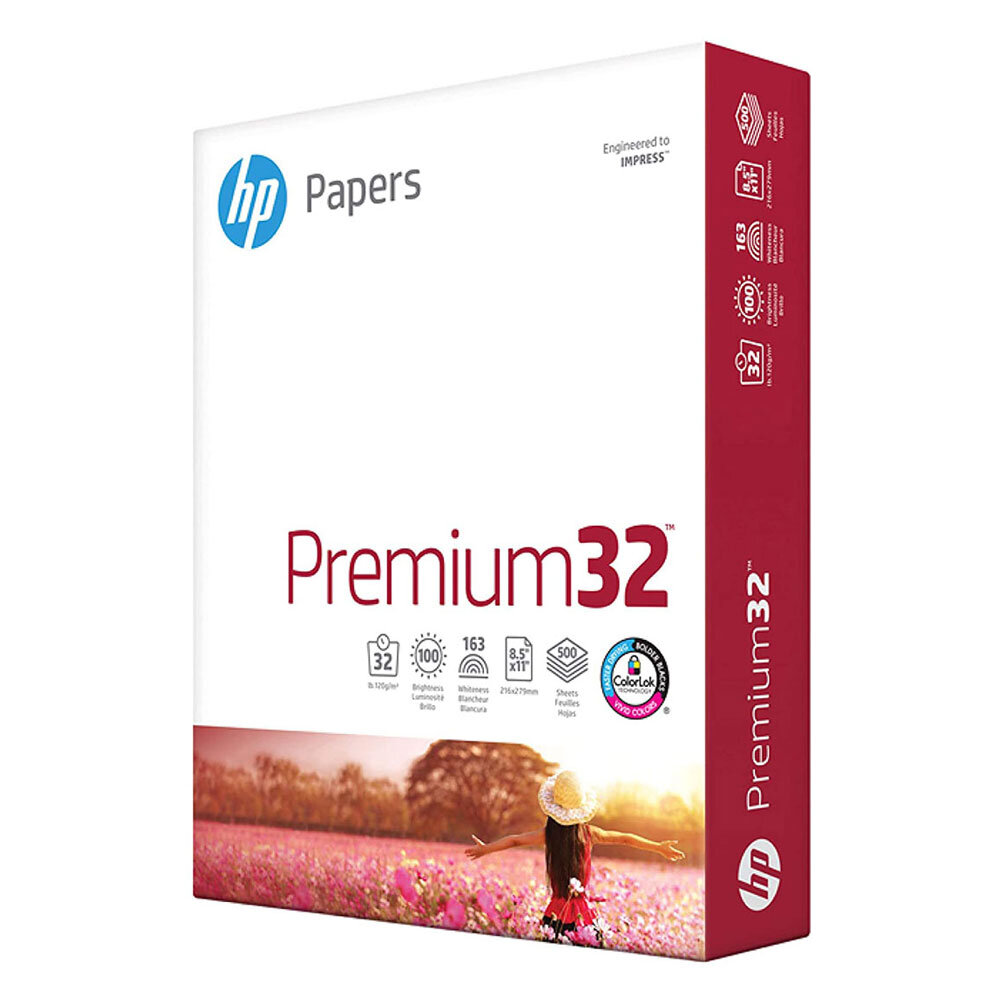




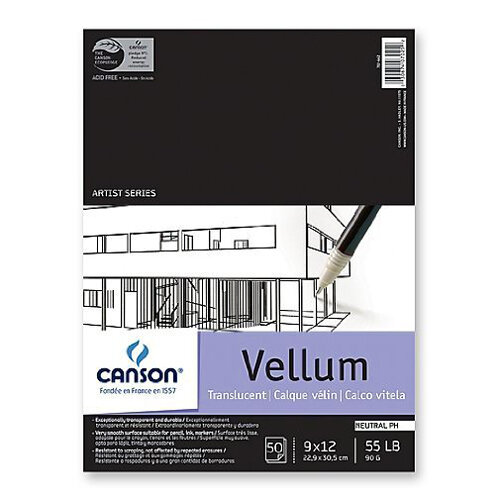
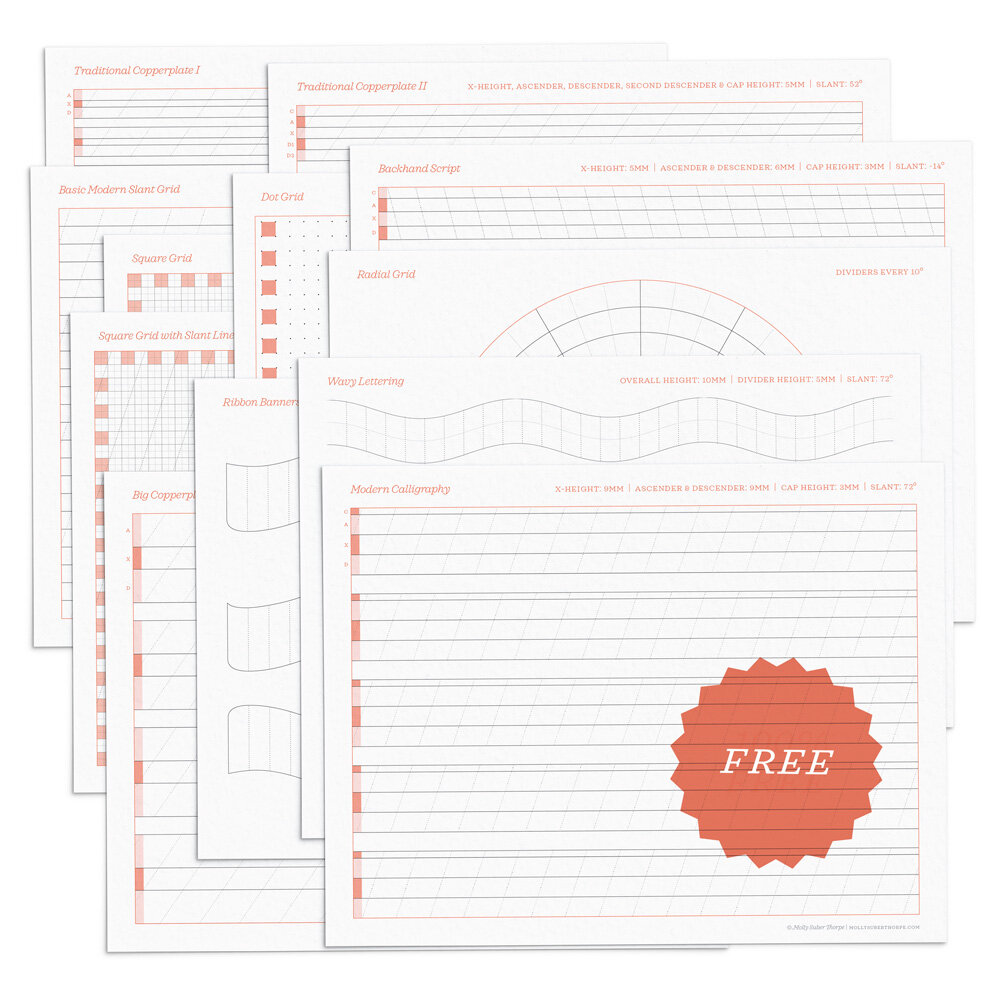
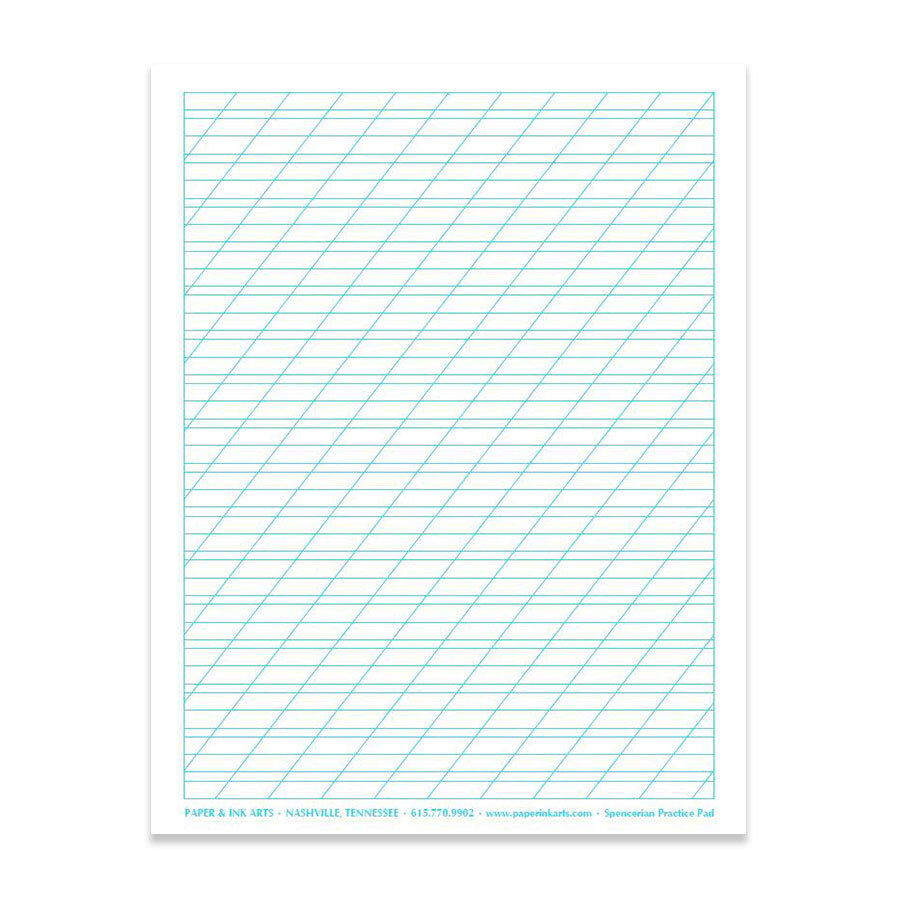
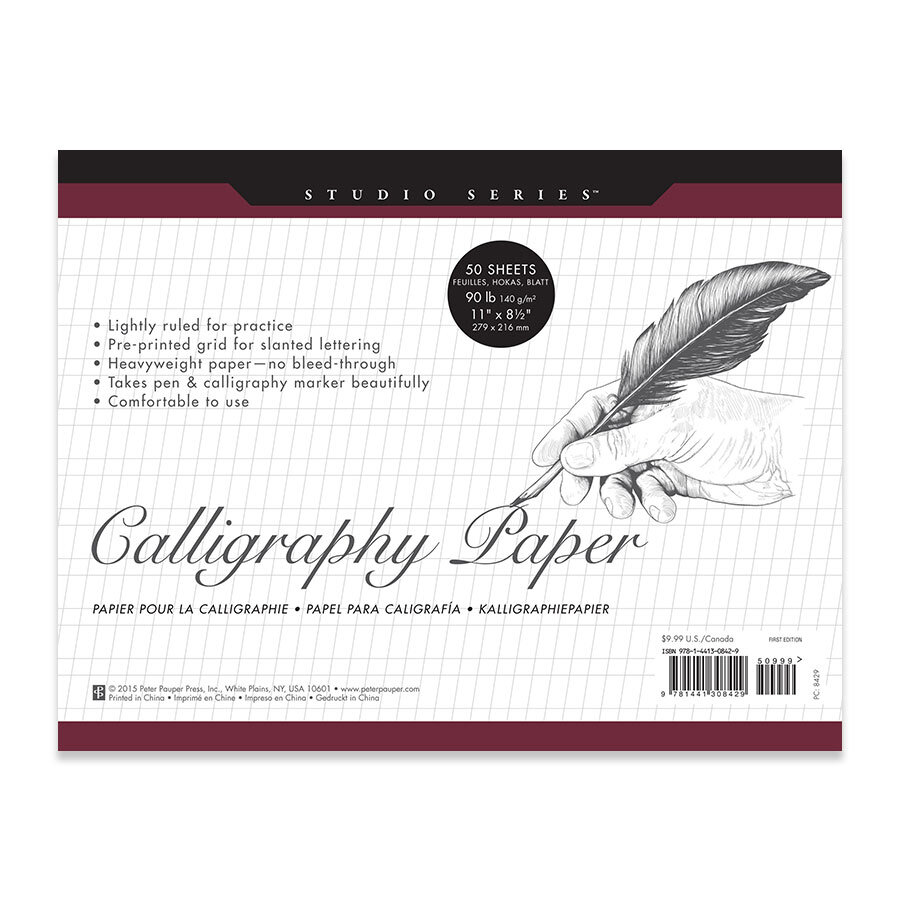
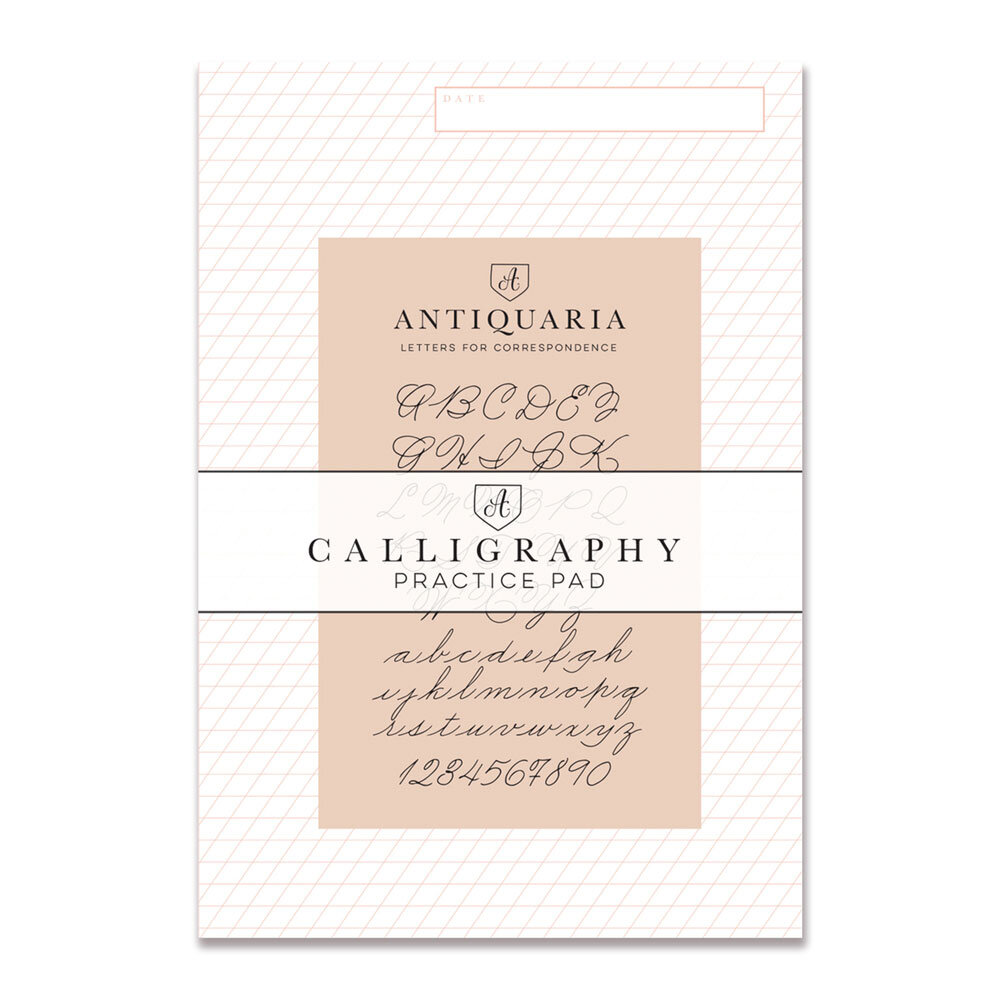




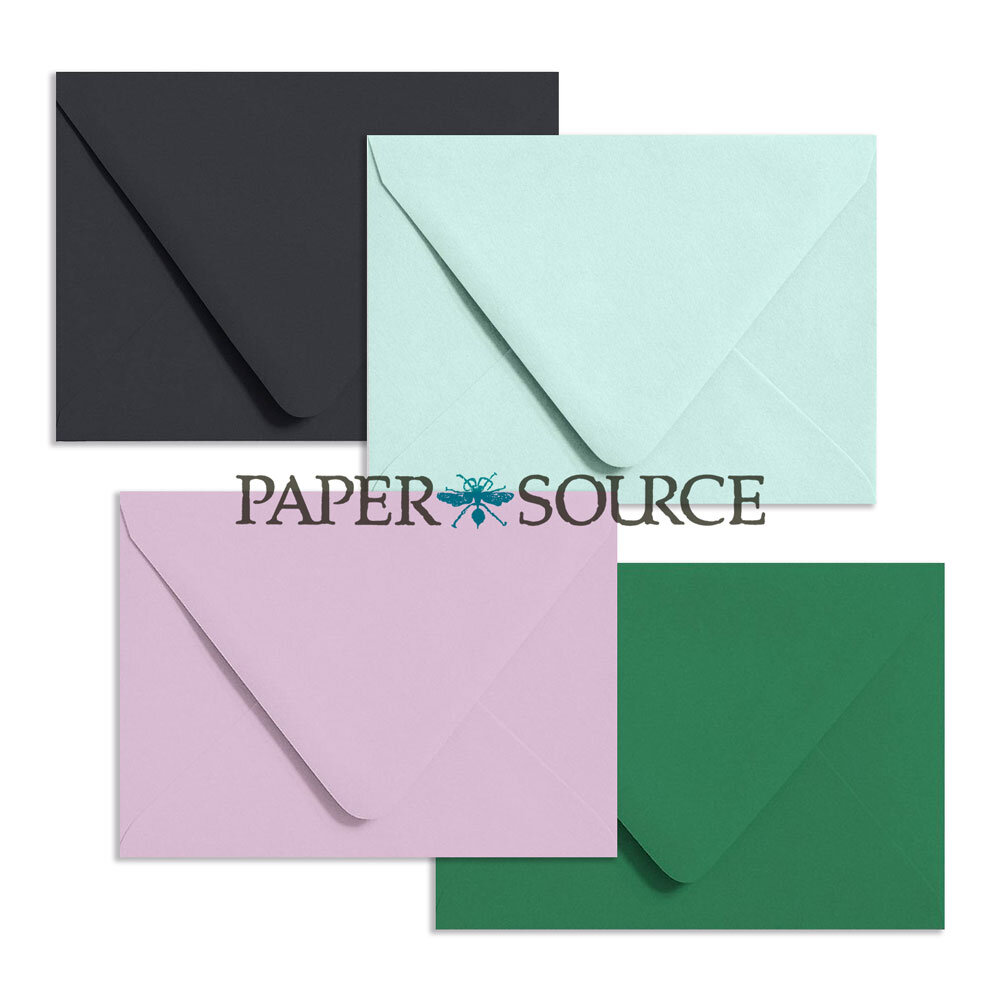

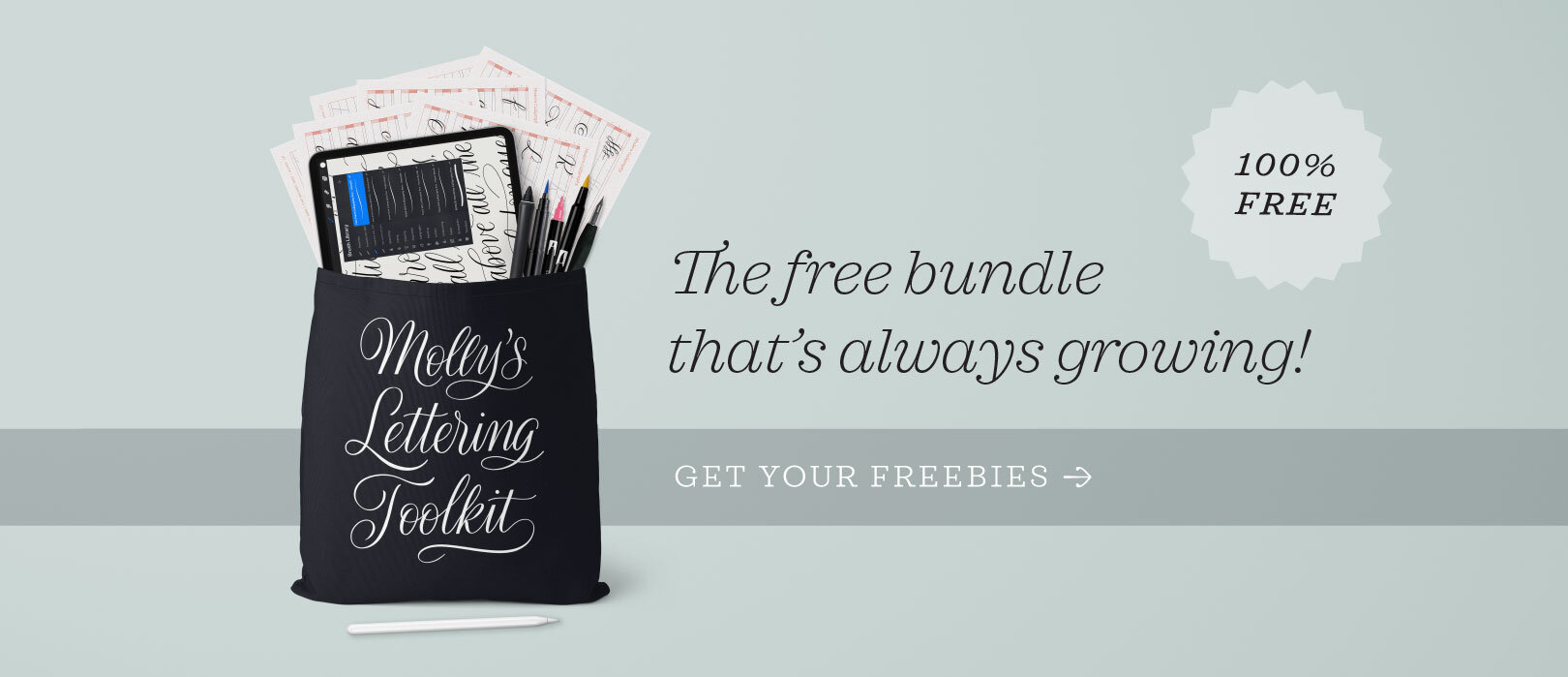



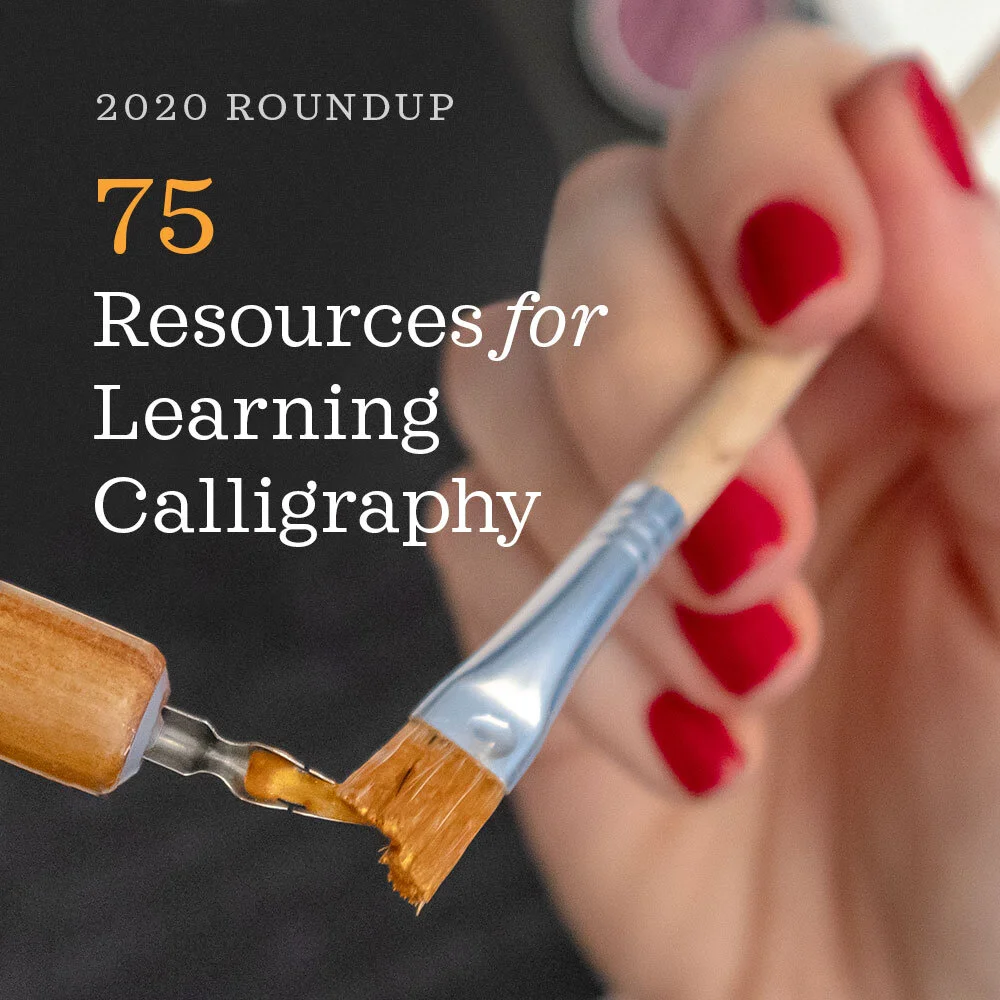

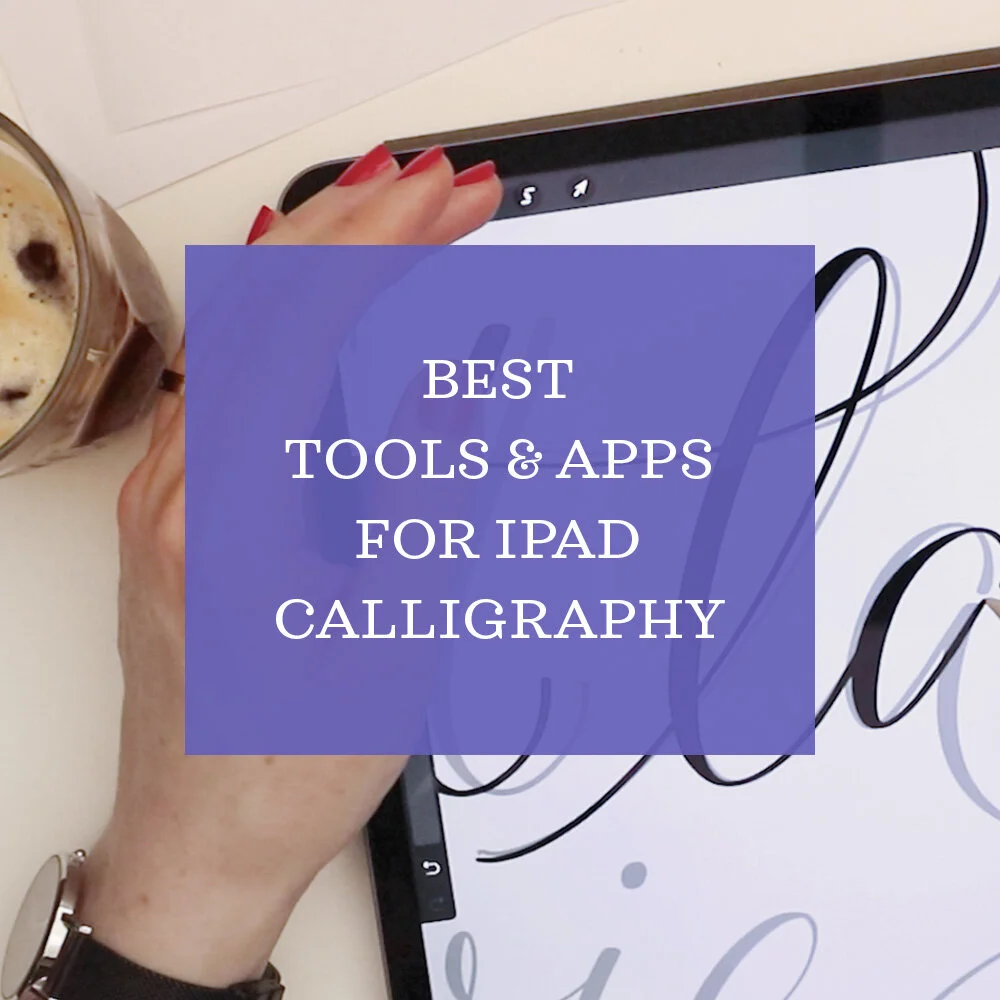
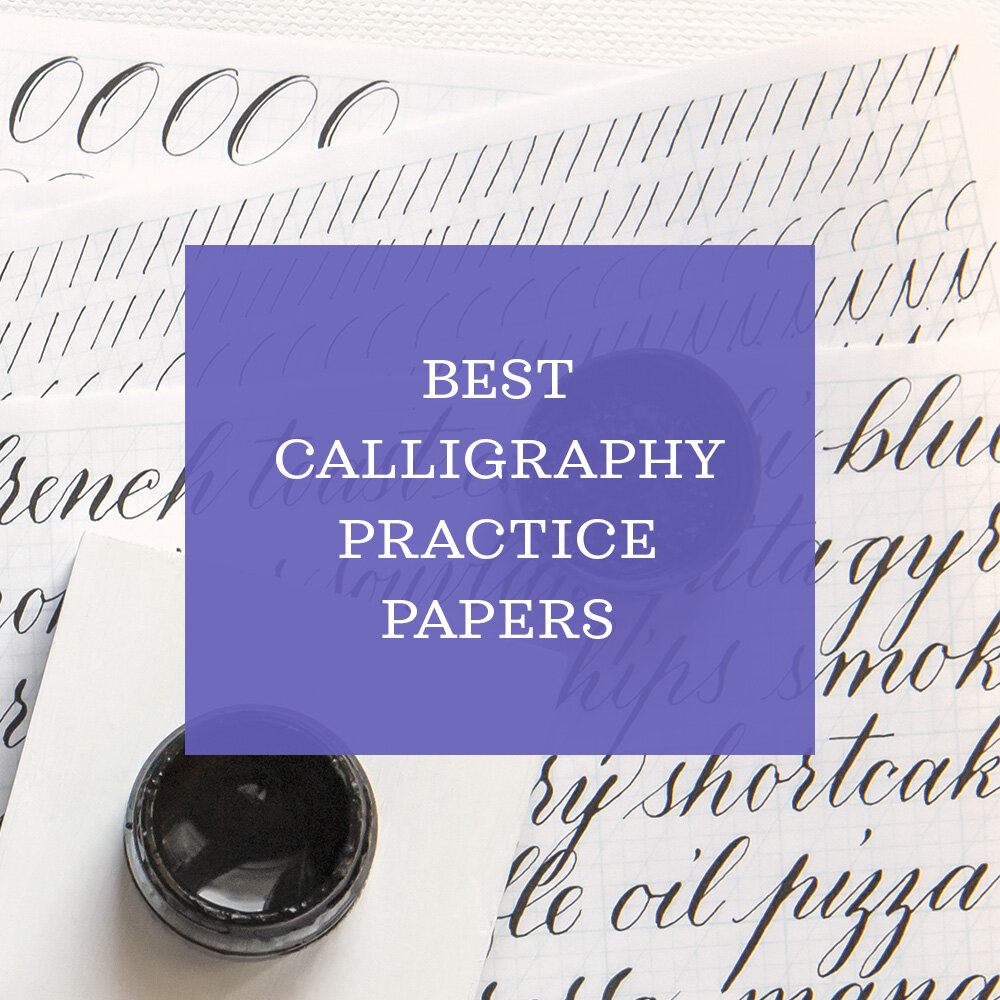


Whether you’re shopping for a calligrapher in your life or treating yourself, I’ve compiled 27 irresistible gift ideas that any lettering artist will love.